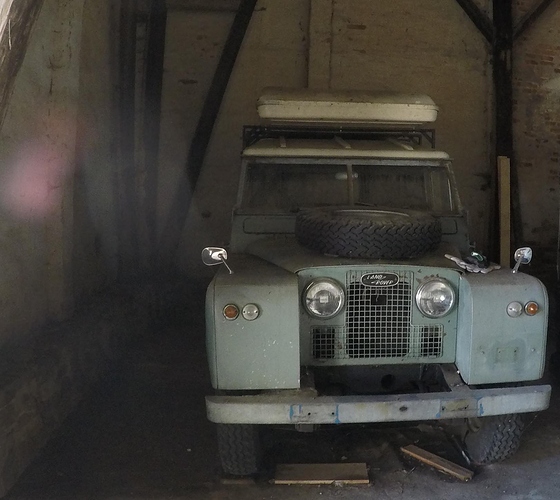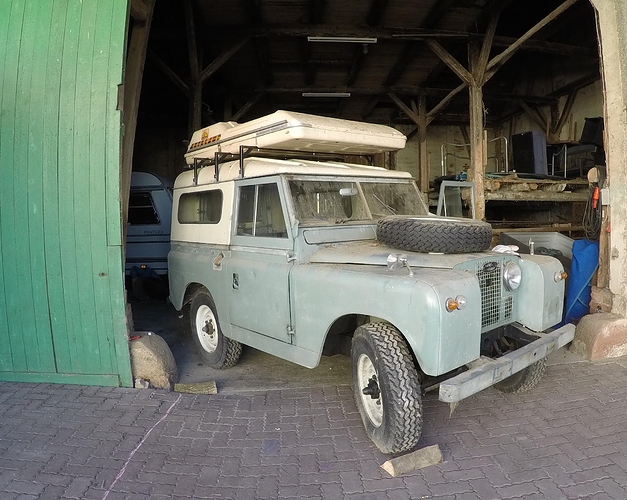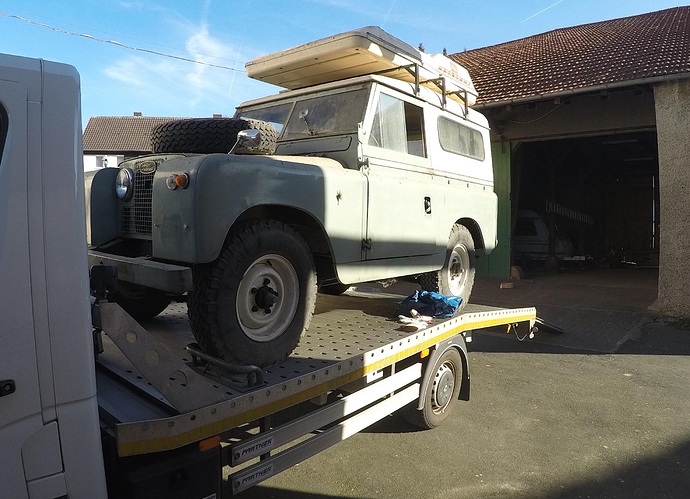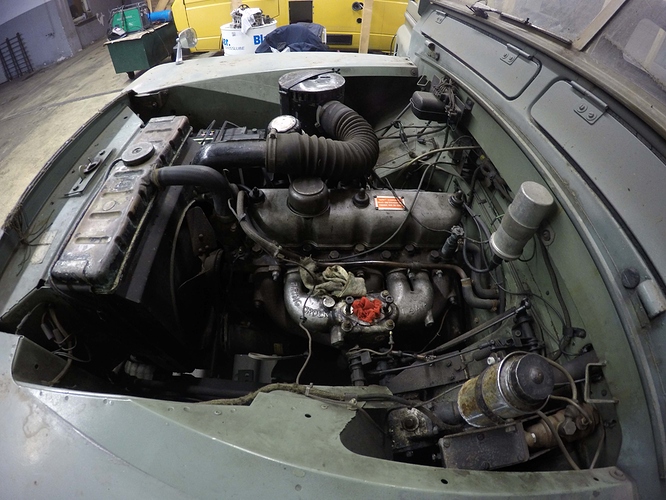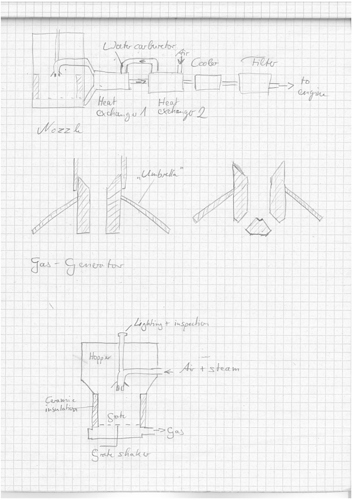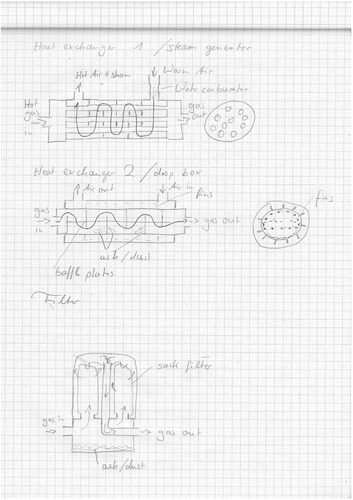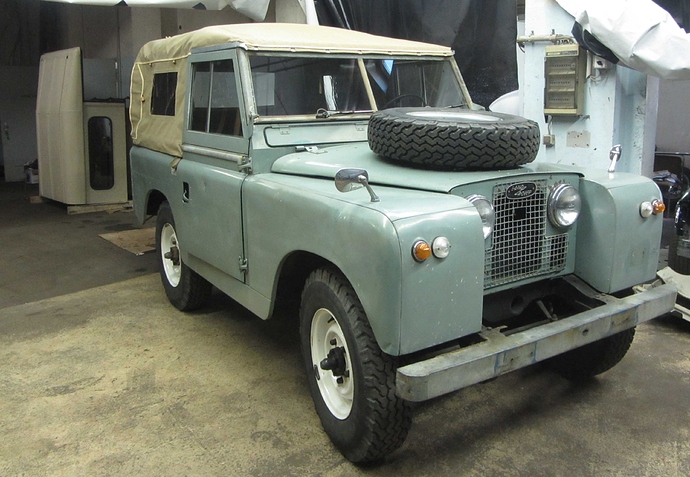Dear DOW and DOC community,
I follow the encouragement and will introduce my work on the Series II Land-Rover, which I hope to convert to chargas within this year. I will choose chargas, it allows a more compact gasifier.
Some specifications: It is a 1961’s Land-Rover Series 2 with 88 inch wheelbase. The engine is a four cylinder petrol engine with 2 1/4 litres displacement and about 70 horsepower on petrol. Not too much, but slow turning and quite high torque at low revs, so reasonably suitable for a gasifier.
In Germany, vehicles with petrol engines that are first time registered prior to 1968 are not under emission-control. As woodgas is no official fuel, the emissions are not known and there are no limit values defined. This is a problem with younger vehicles, as they have to fulfill certain limits. With woodgas, this can’t be fulfilled or you have to spend heaps of money for official measurements. But with vehicles prior to 1968, this is not a problem and allows a more or less legal use of woodgas. At least, there is a legal loophole.
So what have I done until now? Not much. The Landy was in hibernation for mare than 4 years in a shed. This week, I let him feel the sun again and moved him to his new home.
In the shed
First daylight
Ready for the way into the new home
I have to replace the front wheel brake cylinders, they do not work anymore and became rusty inside. And repair the carburetor, it is leaking a bit (which gave me the wish to change to chargas soon to get rid of this smelly petrol).
Apart from this I have to check everything and pass the mandatory vehicle inspections. If this is passed, I can register the Landy, get some number plates and it is back on the road again.
Sorry, I have no pictures form the latest progress and the engine yet.
So what are my ideas for the gasifier? After Kristijan’s latest built, I plan to do something similar. A downdraft charcoal gasifier with a heat exchanger and water injection. Also a bit inspirated by Francois Recumbent bike with motorized gas trailer - #9 by k_vanlooken. I plan to build everything close and compact together on a luggage carrier on the trailer hitch, just similar to Kristijan’s gasifier on his former Chevrolet Lancetti Leitinger wood gasifier - #115 by KristijanL
Advantage: It is formally cargo and no modification to the car.
I will draw a sketch and post it.
Just a word of warning: I will be anything but close to the building speed of Kristijan, as I’m in a kind of trainee programm at the moment and barely at home. Just have a week of holidays that I used mostly for the Landy.
So unfortunately for you and me a bit patience is needed.
